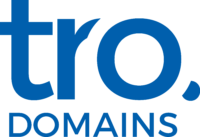Choosing the Right Website Builder
Selecting an appropriate Website Builder is a pivotal decision that will influence the ease and success of your website creation process. With a plethora of options on the market, it is essential to choose one that meets your specific requirements and skill level. Key factors to consider include ease of use, customisation capabilities, customer support, and pricing.
Ease of use is particularly important if you are not highly experienced with web development. Many Website Builders are designed with user-friendly interfaces that allow individuals without technical expertise to create professional-looking websites. Drag-and-drop functionalities, for instance, enable you to design your site by simply moving elements around on the screen, making the process straightforward and intuitive.
Customisation is another critical aspect to consider. A good Website Builder should offer a variety of templates that can be tailored to match your brand’s aesthetic and functional requirements. Look for builders that provide flexible design options, allowing you to modify colours, fonts, and layouts to create a unique and cohesive look. Some advanced builders also offer code access for further customisation, giving you more control over the final design.
Customer support can be a lifesaver, especially when you encounter issues or need guidance. Opt for a Website Builder that offers comprehensive support, including tutorials, forums, and direct customer service. This can help you troubleshoot problems efficiently and ensure your website runs smoothly.
Cost is another significant consideration. Website Builders come with different pricing models, ranging from free plans with basic features to premium plans with advanced functionalities. Evaluate your budget and decide which plan offers the best value for your needs. Keep in mind that while free plans can be enticing, they often come with limitations such as ads or restricted customisation options. Investing in a paid plan can provide greater flexibility and more professional results.
When assessing different Website Builders, it’s also beneficial to look at the additional features they offer. For instance, if you plan to sell products online, a builder with robust e-commerce capabilities will be essential. Features like integrated payment gateways, inventory management, and customer reviews can streamline your online business operations. SEO tools are another valuable addition, helping you optimise your site for search engines to attract more organic traffic.
User reviews and ratings can provide insightful information about the performance and reliability of different Website Builders. Take the time to read reviews from other users to understand the strengths and weaknesses of each option. Additionally, many builders offer free trials or money-back guarantees, allowing you to test their features before making a commitment.
Ultimately, the best Website Builder for you will depend on your specific needs and preferences. By considering factors such as ease of use, customisation options, customer support, and cost, you can make an informed decision that will set the foundation for a successful and professional website.
Understanding Your Website’s Purpose
Before starting the design process, it’s crucial to determine the main objectives of your website. Ask yourself what you aim to achieve and who your target audience is. Whether you’re creating a personal blog, an e-commerce store, or a professional portfolio, these goals will shape the overall structure and content of your site.
By clearly defining your website’s purpose, you can tailor its features to meet the expectations of your audience. For instance, a personal blog may focus on frequent content updates and engagement tools like comment sections and social media sharing buttons. Conversely, an e-commerce site would prioritise features like product galleries, secure payment gateways, and customer reviews.
Identify the key actions you want visitors to take. If your goal is to generate leads, consider incorporating elements such as contact forms, subscription offers, or downloadable resources. For those looking to drive sales, highlight special offers, and ensure a seamless checkout process. Understanding these core actions will help you design a user journey that aligns with your objectives.
Additionally, consider the type of content that will best convey your message. High-quality images, engaging videos, and well-crafted text all play a part in creating a compelling user experience. For example, a portfolio website would benefit from a visually appealing gallery to showcase your work, while a blog would require a clean and readable layout for text-heavy content.
Think about the tone and style that will resonate with your audience. A corporate site might adopt a formal and professional tone, whereas a lifestyle blog might use a more casual and conversational style. This consistency in communication helps build trust and rapport with your visitors.
Also, take into account any specific functionalities your site might need. An events page with calendar integration, a booking system for services, or a forum for community interaction are examples of features that could be essential depending on your website’s purpose.
When planning your site, it’s beneficial to look at competitors or industry leaders for inspiration. Analyse their websites to identify successful strategies and elements that you can adapt to fit your brand. However, make sure your site remains unique and true to your identity.
Incorporating analytics tools can provide valuable insights into user behaviour and help you refine your website over time. By tracking metrics such as page views, bounce rates, and conversion rates, you can gauge how well your site is performing in relation to your goals. This data can guide future updates and improvements, ensuring your website continues to meet the needs of your audience effectively.
Remember that a clear and well-defined purpose not only guides your design and content choices but also helps you measure the success of your website. By aligning every element of your site with your primary objectives, you can create a focused and impactful online presence.
Designing a User-Friendly Layout
When crafting your website’s design, it’s essential to focus on creating a simple and intuitive layout. Visitors should be able to navigate your site easily and find what they’re looking for without any hassle. One of the advantages of using a website builder is the range of templates available, which can significantly streamline the design process. For example, Squarespace is known for offering a variety of excellent templates.
Selecting the right template is crucial. Choose one that aligns with your brand’s identity and tweak it to fit your specific needs. Ensure the template you select is responsive, meaning it will adapt seamlessly to different screen sizes, including mobile devices. With an increasing amount of web traffic coming from mobile users, it’s vital to offer a smooth experience across all platforms.
Next, focus on the structure of your site. Organise content logically, using clear headings and subheadings to break up text and guide users through your pages. A well-structured site improves usability and keeps visitors engaged. Implement a consistent navigation menu, usually located at the top or side of the page, to help users easily access different sections of your site.
Visual hierarchy plays a significant role in guiding users’ attention to the most important elements. Utilise varying font sizes, bold text, and contrasting colours to highlight key sections and calls-to-action. However, avoid overloading your pages with too many visual elements, as this can overwhelm visitors and detract from the user experience.
Whitespace, or negative space, is another important design aspect. It helps to avoid clutter and allows elements to breathe, making your content more digestible. Strategic use of whitespace can enhance the overall aesthetic of your site and improve readability.
Accessibility is also a key consideration. Ensure your website is usable for people with disabilities by incorporating features such as alt text for images, keyboard-friendly navigation, and readable font sizes. This not only broadens your audience but also demonstrates inclusivity and consideration.
Loading speed is a critical factor that can influence user experience and engagement. To maintain fast loading times, optimise images and other media files. Compress them without sacrificing quality to reduce the strain on your site’s performance. Additionally, avoid using unnecessary scripts and plugins that can slow down your site.
Interactive elements, such as buttons and forms, should be easy to find and use. Ensure buttons are large enough to click easily and use contrasting colours to make them stand out. Forms should be straightforward, asking for only necessary information to avoid deterring users from completing them.
Finally, regularly test your site’s layout on different devices and browsers to ensure it performs well across various platforms. User feedback can provide valuable insights into any usability issues, allowing you to make necessary adjustments and improvements.
By focusing on simplicity, organisation, and accessibility, you can create a user-friendly layout that enhances the overall experience for your visitors.
Optimising for Search Engines
To enhance your website’s visibility and attract more visitors, it is crucial to implement effective search engine optimisation (SEO) techniques. Start by conducting thorough keyword research to identify terms and phrases that your target audience is likely to use when searching for your products or services. These keywords should be naturally integrated into your content, including titles, headings, and body text, to improve your search engine rankings.
Meta tags, including title tags and meta descriptions, play a significant role in SEO. Each page on your website should have a unique title tag that accurately describes its content and incorporates relevant keywords. Meta descriptions should provide a concise summary of the page’s content, also containing keywords where appropriate. These elements not only help search engines understand your site’s relevance but also encourage users to click on your link when it appears in search results.
URL structure is another important aspect of SEO. Use clear and descriptive URLs that include keywords, making it easier for both search engines and users to understand what the page is about. Avoid using long strings of numbers or irrelevant characters in your URLs, as these can be confusing and less effective for SEO purposes.
Internal linking within your website can improve SEO by helping search engines crawl your site more effectively and understand the relationship between different pages. Use descriptive anchor text for your internal links, ensuring it includes relevant keywords. This not only enhances the user experience by guiding visitors to related content but also boosts your site’s search engine rankings.
Content is king when it comes to SEO, so focus on creating high-quality, original content that provides value to your visitors. Regularly update your site with fresh content to keep it relevant and engaging. This could include blog posts, articles, videos, or infographics that address your audience’s interests and needs. Search engines favour sites that frequently update their content, so maintaining a consistent posting schedule is beneficial.
Optimising images and media files is also essential for SEO. Use descriptive file names and alt text that include relevant keywords. This not only helps search engines index your images but also improves accessibility for users with visual impairments. Additionally, compress images to reduce file sizes and improve loading times, as faster websites tend to rank higher in search results.
Backlinks, or links from other reputable websites to your own, can significantly enhance your site’s authority and SEO. Aim to acquire high-quality backlinks through methods such as guest blogging, partnerships, and creating shareable content that others will want to link to. Avoid using black hat SEO techniques, such as buying links or using link farms, as these can lead to penalties from search engines.
Finally, make use of analytics tools to monitor your SEO performance and make data-driven decisions. Track metrics such as organic traffic, bounce rates, and keyword rankings to identify areas for improvement and adjust your strategy accordingly.
Ensuring Fast Loading Speeds
Website speed is critical for maintaining user engagement and improving search engine rankings. One of the most effective ways to enhance loading times is by optimising images. Compress images to reduce their file sizes without compromising quality. Utilising modern image formats like WebP can also result in faster load times. Additionally, ensure that images are appropriately sized for their display dimensions; large images scaled down in the browser can significantly slow your site.
Another key factor is minimising the use of heavy scripts and plugins. While plugins can add valuable functionality to your site, they can also bloat your code and increase load times. Be selective with the plugins you install and regularly review their necessity. Deactivate and remove any that are not essential to your website’s performance. Similarly, reduce the number of third-party scripts, as each one requires additional server requests that can slow down page loading.
Browser caching is another technique that can improve loading speeds. By enabling browser caching, you allow static files such as images, stylesheets, and JavaScript to be stored locally on a user’s device. This means that when a visitor returns to your site, their browser can load these files from the cache rather than downloading them again, resulting in faster load times.
Content Delivery Networks (CDNs) can also enhance your website’s speed. CDNs distribute your site’s static content across multiple servers worldwide. When a user accesses your site, the content is delivered from the server closest to their geographical location, reducing latency and speeding up load times. Implementing a CDN can be particularly beneficial for websites with a global audience.
Additionally, reducing the number of HTTP requests is essential for fast loading speeds. Each element on a webpage—images, scripts, stylesheets—requires a separate HTTP request. Combining files, such as merging multiple CSS files into one, can decrease the number of requests and enhance load times.
Server performance also plays a crucial role in website speed. Choose a reliable hosting provider that offers good server performance and uptime. Shared hosting plans can be cost-effective, but they may also result in slower speeds if the server is overloaded. Consider upgrading to a Virtual Private Server (VPS) or dedicated hosting plan if your site experiences high traffic.
Lastly, enabling Gzip compression can significantly reduce the size of your HTML, CSS, and JavaScript files. This compression method decreases the amount of data sent between your server and the user’s browser, resulting in faster load times. Most modern web servers support Gzip compression, and it can be enabled through your server’s configuration settings.
Incorporating High-Quality Content
High-quality content is essential for engaging your audience and establishing your website as a reliable source of information. Start by identifying the types of content that will be most beneficial for your visitors. This could include blog posts, articles, product descriptions, case studies, or testimonials. Ensure that each piece of content is well-researched, accurate, and relevant to your audience’s interests and needs.
To maintain a professional tone, focus on clear and concise writing. Avoid jargon unless it is specific to your industry and will be easily understood by your target audience. Instead, aim for straightforward language that effectively communicates your message. Good grammar, correct spelling, and proper punctuation are crucial in presenting a polished and credible image.
Visual elements can greatly enhance your content. Incorporate high-quality images, infographics, and videos to break up text and make your site more visually appealing. These elements not only make the content more engaging but also help to illustrate complex ideas and provide additional value to your audience. Always ensure that any multimedia used is relevant and complements the written content.
Structuring your content for readability is equally important. Use headings, subheadings, bullet points, and short paragraphs to make your content easy to scan. This approach helps visitors quickly find the information they are looking for and improves the overall user experience. Including a table of contents for longer articles can also be beneficial in guiding readers to specific sections.
SEO should be a consideration in your content creation process. Integrate relevant keywords naturally within your text, ensuring they fit seamlessly into the narrative. However, avoid keyword stuffing, as it can make your content difficult to read and negatively impact your search engine rankings. Balancing keyword optimisation with high-quality, valuable content is key to attracting both search engines and human readers.
User-generated content, such as reviews and comments, can also add value to your website. Encourage visitors to leave feedback and engage with your content. This interaction not only provides social proof but also generates fresh content that can improve your site’s SEO.
Regular updates and additions to your content library are essential to keep your site dynamic and engaging. Monitor industry trends and audience feedback to identify new topics and areas of interest. By consistently providing valuable and relevant content, you can build a loyal audience and establish your website as an authority in your field.
Implementing Effective Call-to-Actions
Call-to-actions (CTAs) are instrumental in guiding your website visitors towards specific goals, such as subscribing to a newsletter, downloading a resource, or making a purchase. To maximise their effectiveness, CTAs should be clear, concise, and compelling. Use action-oriented language that encourages users to take immediate steps, such as “Sign Up Now,” “Get Started,” or “Buy Today.”
Strategic placement of CTAs is vital for their success. They should be prominently displayed on your homepage, landing pages, and at the end of blog posts or product descriptions. However, avoid overwhelming your visitors with too many CTAs on a single page. Instead, ensure each page has a primary CTA that aligns with your main objective, supported by secondary CTAs that offer alternative actions without detracting from the primary goal.
Design is another crucial element of effective CTAs. Use contrasting colours to make your CTAs stand out against the rest of the page. Buttons should be large enough to click easily and positioned in areas where they are most likely to catch the user’s eye. Surround your CTAs with whitespace to draw attention and make them more noticeable.
Personalisation can also enhance the effectiveness of your CTAs. Tailor the messaging to resonate with your target audience’s interests and needs. For example, a CTA for a blog subscription could read, “Join thousands of readers who receive our weekly insights.” This approach adds a layer of social proof and makes the action more appealing.
Testing different variations of your CTAs can provide valuable insights into what works best for your audience. A/B testing allows you to compare different wording, colours, placements, and designs to determine which combination yields the highest conversion rates. Regularly review and refine your CTAs based on these findings to continually improve their performance.
Lastly, ensure that the action promised by the CTA is straightforward and easy to complete. A seamless user experience from the CTA click to the final action is essential for maintaining user trust and achieving your conversion goals. Simplify forms, minimise required fields, and provide clear instructions to guide users through the process efficiently.



